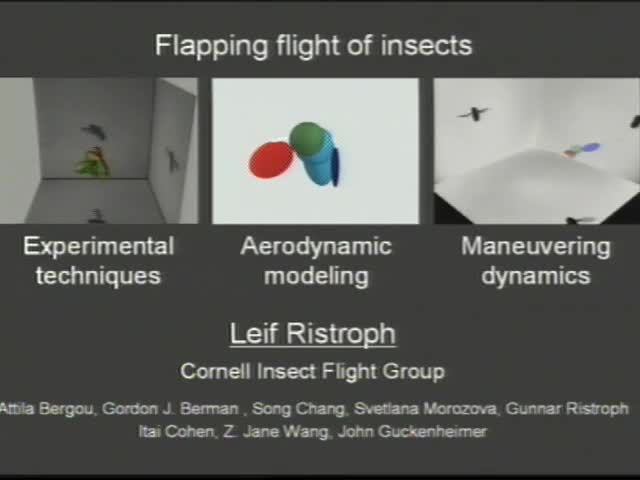How flying insects keep stable, up-right, and on-course
Presenter
June 2, 2010
Keywords:
- physically-based
MSC:
- 70B10
Abstract
For animals and machines alike, maintaining balance during flight is a
crucial and demanding task. The need for airplane flight stability led to
a schism between aviators who sought built-in, or passive, stability and
those who emphasized the need for active controls. How has this tension
played out for the first flyers, the insects? Our group combines table-top
experiments on fruit flies and lap-top physically-based simulations to
study insect flight stability and control. First, we show how directly
perturbing the flight of insects unlocks the physics of flapping-wing
flight and also reveals some remarkable properties of these critters’
sensory-neural systems. Second, we argue that these sophisticated fight
control systems are largely sculpted by the physical requirement of
stability. This idea leads to a general theory that links the body plans
of insects with the controllers that must suppress the growth of
instabilities, and we apply this theory to a variety of modern insects,
flapping-wing robots, and even the prehistoric insects that were the first
to take to the air.
